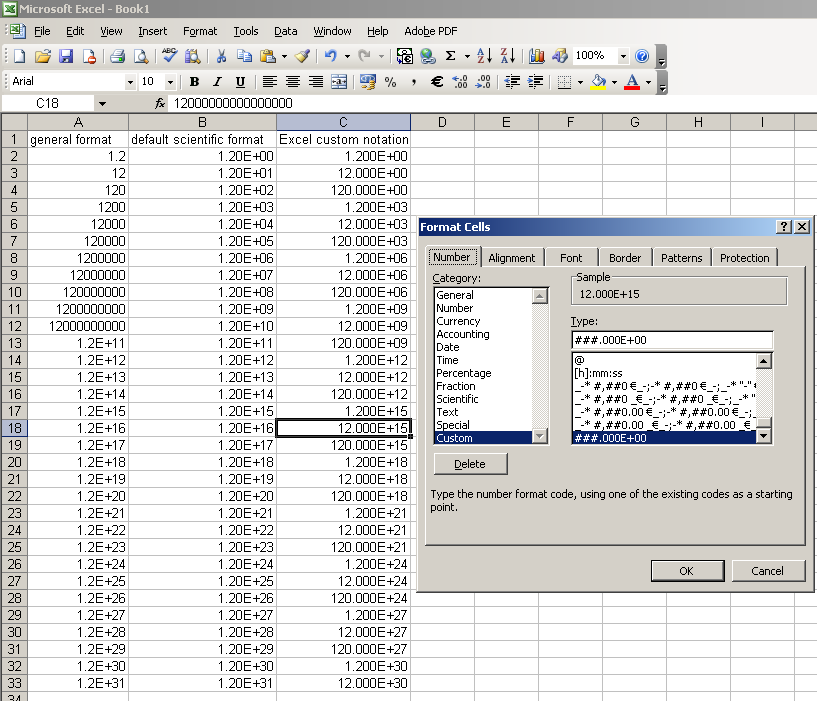Engineering and SI Number Format in Calc
|
|
|---|
|
Quick Navigation
Team |
Contents
Explanation of Notations
The following is a short description of all the number formats to be discussed here.
Engineering Notation
This type of notation is an offshoot of Scientific Notation. The difference is that the exponent is only shown in multiples of 3. Thus a number such as 153,100 becomes 153.1E+3 in Engineering notation[[1]] instead of 1.531E+5 in scientific.
SI Notation
This is what's known as SI Prefix[[2]] notation. Similar to Engineering Notation the exponent also runs in multiples of 3 (usually), but the difference is that instead of showing the E+/- notation a symbol is given for each exponent. E.g. 153,100 in SI notation would be 153.1k.
Binary Prefix Notation
This is very similar to SI, but is intended for use when referring to sizes of data storage. Binary Prefix[[3]] Notation works in much a similar way, but is not calculated using 10 as a multiple (as with Scientific). Rather the closest matching power of 2 is used. Thus instead of 1000 we get 1024. As a convention similar symbols to SI is used, but with an "i" suffix to distinguish then. E.g. 153,100 in Binary Prefix Notation would become 149.51Ki.
Examples from other software
Example of how other software handle these formats.

